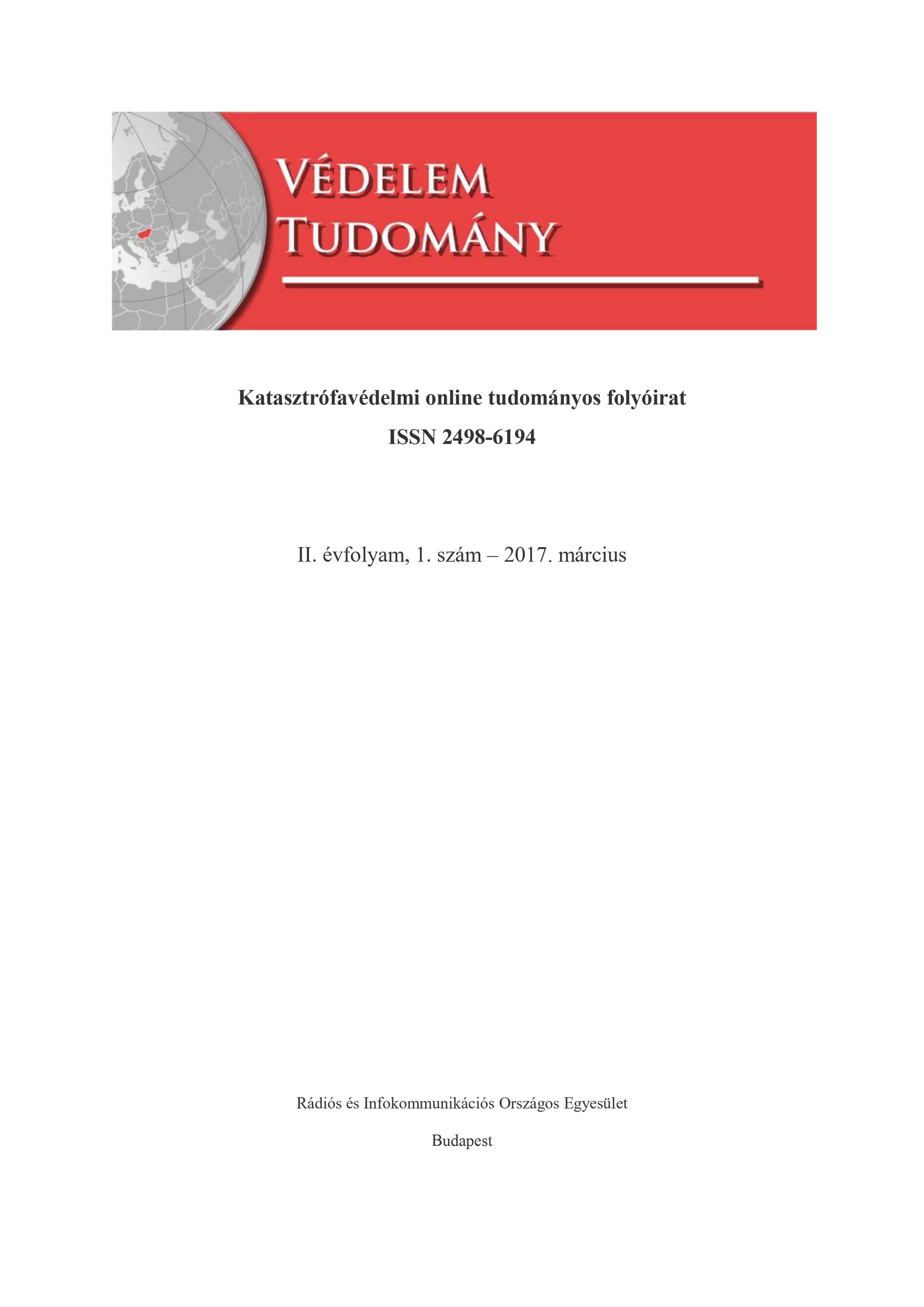A pilóta nélküli repülőgépek (UAV) katasztrófavédelmi alkalmazásának lehetőségei a fejlődő országokban
Absztrakt
A pilóta nélküli repülőgépek (UAV) használata egyre hangsúlyosabb szerepet kap a katasztrófák felszámolásának időszakában. Európától távoli helyeken, ahol az infrastruktúra sérülékenysége vagy esetleges hiánya tapasztalható, óriási kihívást jelent a katasztrófák egyes műveleteinek végrehajtása, megvalósítása. A szerzők célja hogy feltárják az UAV-k katasztrófavédelmi alkalmazásának lehetőségeit a fejlődő országokban. Módszertan: A szerzők áttekintették a releváns szakirodalmat,
valamint felhasználták személyes tapasztalataikat is. Eredmények: A különböző típusú és méretű UAV- k használata nem csak a fejlett, hanem a fejlődő országokban is hatékonyan működhet. Az UAV- k gyors és olcsó megoldási lehetőséget nyújtanak a fejlődő országokban a katasztrófák bekövetkezése során megvalósítható hatékonyabb élet-, és vagyonmentés érdekében.
Hivatkozások
Fahlstrom, P.G. & Gleason, T. J. (2012) Introduction to UAV Systems (4th ed) Johney and Sons, Ltd. West Sussex, UK
Htet, Z. B. (2016) Disaster Drones: Great Potential, Few Challenges? 10th Oct. RSIS Commentary, No. 253
Restas, A. (2015) Drone Applications for Supporting Disaster Management. World Journal of Engineering and Technology, 3, 316-321. Retrieved from:http://dx.doi.org/10.4236/wjet.2015.33C047
Bhattacharjee, D. (2015) Unmanned aerial Vehicles and Counter Terrorism Operations. Indian council of world affairs
Sandbrook, C. (2015) The Social Implications of Using Drones for Biodiversity Conservation. Sandbrook, 44(Suppl. 4):S636–S647 DOI 10.1007/s13280-015-0714-0
Limnaios, G., Tsourveloudis, N. & Valavanis, K. P. (2012 Introduction: A Chapter in Angelov, P. (Ed) (2012) Sense and Avoid in UAS: Reason and Applications, John Wiley and Sons, Ltd. UK
Karlsrud, J. & Rosén, F. (2013). In the Eye of the Beholder? UN and the Use of Drones to Protect Civilians. Stability: International Journal of Security and Development. 2(2), p.Art. 27. DOI:http://doi.org/10.5334/sta.bo
Khan, A. K. (2016) Pioneers of Unmanned Aviation (Online) 1st Nov. Retrieved from: https://abulkalamkahanblog.wordpress.com/2016/11/01/pioneers-of-unmanned-aviation/ (Download: 08.01.2017)
Wagner, M. (2014) Unmanned Aerial Vehicles. (Online) Retrieved from: https://www.researchgate.net/publication/282747710_Unmanned_Aerial_Vehicles [Accessed 05/05/16]
Kilani, N. K. S. Design of Unmanned Aerial Vehicle with Long Endurance Capacity and Increased Power to Weight Ratio (2015) (Msc) Thesis, University-Kingsville
Webb, D., Wirbel, L. & Sulzman, B. (2010). From Space, No One Can Watch You Die, Peace Review, 22:1, 31-39, DOI: 10.1080/10402650903539901
United Nations Office for the Coordination of Humanitarian Affairs (OCHA) (2014).
Unmanned Aerial Vehicles in Humanitarian response. Occasional Policy Paper, OCHA Policy and Studies Series
Dorn, A.W. (2007). Tools Of The Trade? Monitoring and Surveillance Technologies in UN Peacekeeping. United Nations
McFarland, M. (2016) Rwanda’s Hospitals Will Use Drones to Deliver Medical Supplies 14th Oct. (Online) Retrieved from: www.money.cnn.com/2016/10/13/technology/Rwanda-drone-hospital/ (Download: 04.01.2017)
Kakaes, K. (2015) Drones and the Protection of Human Rights: a Chapter in Greenwood, F &Kakaes, K (2015) Drones and Aerial Observation: New Technologies for Property Rights, Human Rights, and Global Development A Primer. New America Retrieved from: http://drones.newamerica.org/primer/DronesAndAerialObservation.pdf (Download 04.01/2017)
Kasaija, P.A. (2014) The Use of Unmanned Aerial Vehicles (Drones) in United Nations Peacekeeping: The Case of the Democratic Republic of Congo, Vol.18, Issue 13
Odido, D. & Madara, D. ( 2013) Emerging Technologies: Use of Unmanned Aerial Systems in the Realisation of Vision 2030 Goals in the Counties. International Journal of Science and Technology, 3(8) December
Dorn, A. W. (2004). Blue Sensors: Technology and Cooperative Monitoring in UN Peacekeeping. Toronto, Canadian Forces College




